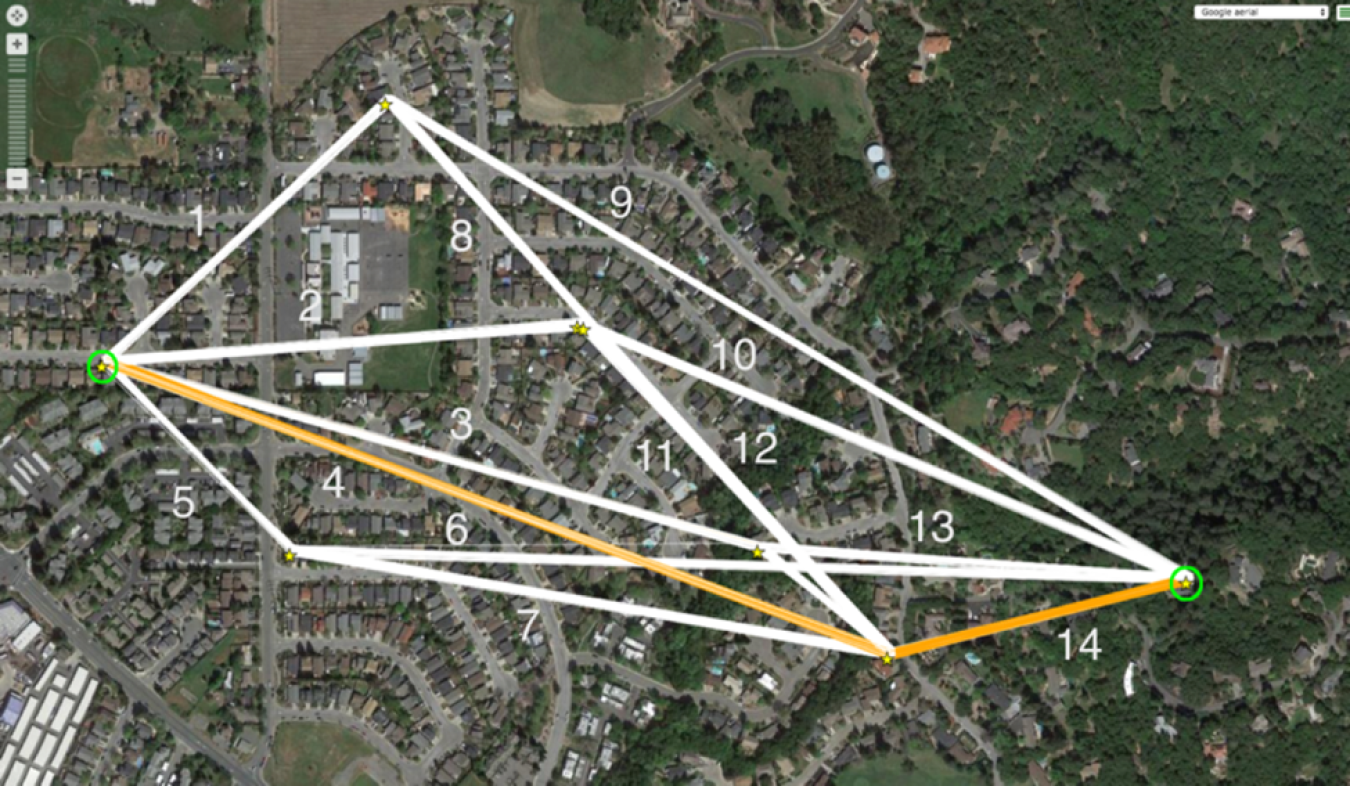Operant Networks developed a networking technology that strengthens cybersecurity for energy resources on the grid
Office of Critical Minerals and Energy Innovation
January 26, 2023
Behind the scenes, the technologies that convert sunlight into energy and deliver electricity to our homes are talking to each other. The strength of these communications has direct implications for achieving a secure, reliable energy future.
As more distributed energy resources (DERs) like solar and wind come online, the power grid is becoming more dispersed and complex. Each new entity connected to the grid provides a potential entry point for hackers.
The U.S. Department of Energy (DOE) awarded Operant Networks $350,000 in 2016 to address this problem. The team at Operant demonstrated a new technology that provides security and intelligence to every piece of data and can be used on any size, or type, of equipment.
At the time, grid cybersecurity was an emerging field, and Operant was a startup company working out of a garage. With no industry-wide standards in place to govern DER cybersecurity, device manufacturers were securing their own devices but not collaborating with industry partners.
“Only DOE had the perspective across multiple stakeholders to understand that cybersecurity would be required across the industry,” said Operant CEO Keith Rose.
National DER capacity is expected to quadruple by 2025, increasing the need for a coordinated cybersecurity approach across the energy industry. For the country to transition to a secure and reliable clean power grid, DERs must be able to securely communicate with each other and protect against external threats.
Traditional, centralized systems of communication and cybersecurity are becoming increasingly vulnerable to cybersecurity threats, as they were originally designed for employees working in office buildings. DERs, which are machines operating outdoors and often in remote locations, can be difficult to secure because they frequently connect to the grid via the internet, and there are multiple points at which they could be compromised. Operant’s novel networking software uses encrypted communication techniques to secure data on distributed edge networks, which are made up of many devices acting as a single system.
DOE subsequently awarded Operant a total of $5 million over the next four years, including $2.6 million in 2019 to develop and deploy a communications technology that securely shares information about DERs with multiple parties across multiple connections. The platform combines cybersecurity and network access functions to address the multi-stakeholder nature of distributed renewables. It connects to existing utility software platforms, allowing utilities to comply with new regulations, control access, and improve cybersecurity overall. Manufacturers, utilities, and grid managers using the platform no longer need to choose between security, reliability, and cost.
Operant built its platform on zero trust architecture, which enables security by assuming that the network is potentially compromised and needs protection when absorbing information. DOE called the solution a “game-changing” technology in its Solar Futures Study.
Beyond sharing information, this project will allow system operators and asset owners to grant permission to access and control DERs securely. This process, known as authentication, is a critical aspect of zero trust architecture.
DOE funding has helped Operant develop, demonstrate, and commercialize its technology; customers have deployed its solutions to over 3 gigawatts of energy infrastructure. In September 2022, Operant announced a $3.8 million round of seed funding led by Constellation Technology Ventures to continue improving its networking and cybersecurity solutions.
While solar systems comprise most DER capacity online today, a fully decarbonized grid will include a mix of renewable energy sources. Operant’s technology can be applied to wind, storage, electrical vehicles, and nuclear power plants on an interconnected grid.
“Climate change is a national problem that has to be addressed by technologies like solar energy. As a national defense issue, the cybersecurity of our power grid is now dependent on these renewable industries,” said Rose. “We’re happy to be sitting in one of the places where those challenges overlap, and we hope to provide a solution.”
Learn more about DOE’s research and investments to secure the grid, solar manufacturing and competitiveness research, and read the Cybersecurity Considerations for Distributed Energy Resources on the U.S. Electric Grid report.

